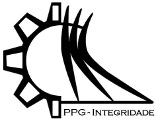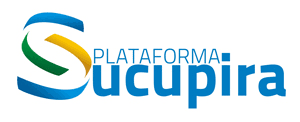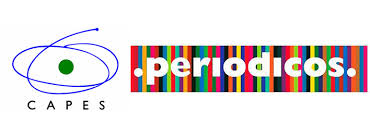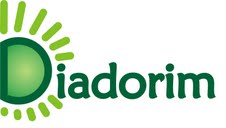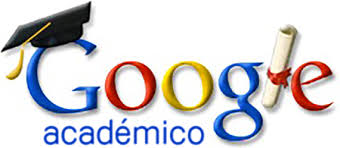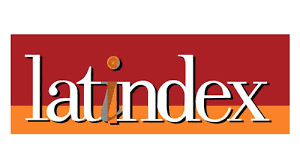UNSCENTED KALMAN FILTERS AND EXTENDED H FILTER FOR SPACECRAFT ATTITUDE ESTIMATION USING QUATERNIONS
DOI:
https://doi.org/10.26512/ripe.v2i20.15004Abstract
In this work, the attitude determination and the gyros drift estimation using the Uncented Kalman Filter (UKF) and the Second-Order Extended H Filter (SOEH F) for nonlinear systems will be described. The extended H filter provides a rigorous method for dealing with systems that have model and noise uncertainties. Thus, extended H filter is simply a robust version of the extended Kalman filter because to add tolerance to unmodeled noise and dynamics. The Unscented Kalman Filter transforms a set of points (cloud) through known nonlinear equations and combines the results to estimate the mean and covariance of the state. The points (called sigma-points) are carefully selected on the basis of a specific criterion. The application uses the simulated measurement data for orbit and attitude of the CBERS-2 (China Brazil Earth Resources Satellite). The attitude model is described by quaternions and the attitude sensors available are two DSS (Digital Sun Sensors), two IRES (Infra-Red Earth Sensor), and one triad of mechanical gyros.The results in this work show that one can reach accuracies in attitude determination within the prescribed requirements, besides providing estimates of the gyro drifts which can be further used to enhance the gyro error model. Keywords: Unscented Kalman Filter, Extended H Filter, Attitude Estimation, Gyro Calibration, Nonlinear SystemReferences
J. L. Crassidis and J. L. Junkins, Optimal Estimation of Dynamic Systems. New York: Chapman and Hall/CRC Applied Mathematics and Nonlinear Science, 2011.
V. Carrara, “An open source satellite attitude and orbit simulator toolbox for Matlab,” Proceedings..., Natal, INTERNATIONAL SYMPOSIUM ON DYNAMIC PROBLEMS OF MECHANICS, 17, ABCM, 2015. Dispon´Ä±vel em: http://mtcm21b. sid.inpe.br/rep/sid.inpe.br/mtc-m21b/2015/04.07.13.24?. Acesso em:: 16 fev. 2016.
E. J. Lefferts, F. L. Markley, and M. D. Shuster, “Kalman filtering for spacecraft attitude estimation,” Journal of Guidance, Vol. 5, No. 5, 1982, pp. 417 ”“ 429.
J. L. Crassidis, F. L. Markley, and Y. Cheng, “Survey of nonlinear attitude estimation methods,” Journal of Guidance, Control and Dynamics, Vol. 30, No. 1, 2007, pp. 12 ”“ 28.
K. Shojaie, K. Ahmadi, and A. M. Shahri, “Effects of iteration in Kalman Filters family for improvement of estimation accuracy in simultaneous localization and mapping,”
Proceedings..., Zurich, IEEE/ASME International Conference on Advanced Intelligent Mechatronics, IEEE/ASME, 2007, pp. 1 ”“ 6.
R. V. Garcia, H. K. Kuga, and M. C. Zanardi, “Using extended Kalman filter and least squares method for spacecraft attitude estimation,” Mathematics in Engineering, Science and Aerospace, Vol. 2, No. 4, 2011, pp. 445”“453.
U. Shaked and N. Berman, “H1 Nonlinear Filtering of Discrete-Time Processes,” IEEE Transactions on Signal Processing, Vol. 43, 1995, pp. 2205 ”“ 2209.
R. Banavar, “A game theoretic approach to linear dynamics estimation,” 1992.
X. Shen, “Discrete H1 filter design with application to speech enhancement,” Proceedings..., Detroit, IEEE International Conference on Acoustics, Speech and Signal Processing, IEEE, 1995, pp. 1504 ”“ 1507.
X. Shen and L. Deng, “Game theory approach to H1 discrete filter design,” IEEE Transactions on Signal Processing, 1997, pp. 1092 ”“ 1094.
J. S. Hu and C. H. Yang, “Second-Order Extended H1 Filter for Nonlinear Discrete-Time Systems Using Quadratic Error Matrix Approximation,” IEEE Transactions on Signal Processing, Vol. 59, No. 7, 2011, pp. 3110 ”“ 3119.
M. D. Shuster, “A Survey of Attitude Representations,” Journal of Astronautical Sciences, Vol. 41, No. 4, 1993, pp. 439 ”“ 517.
J. R.Wertz, Spacecraft attitude determination and control. Dordrecht, Holanda: D. Reidel, 1978.
J. L. Crassidis and F. L. Markley, “Unscented filtering for spacecraft attitude estimation,” Journal of Guidance, Control and Dynamics, Vol. 26, No. 4, 2003, pp. 536 ”“ 542.
H. Fuming and H. K. Kuga, “CBERS simulator mathematical models,” CBTT Project, CBTT/ 2000/ MM/ 001, 1999.
R. V. Garcia, H. K. Kuga, and M. C. Zanardi, “Unscented Kalman filter applied to the spacecraft attitude estimation with euler angles,” Mathematical Problems in Engineering, Vol. 2012, 2012, pp. 1”“12.
R. V. Garcia, H. K. Kuga, and M. C. Zanardi, “Unscented Kalman filter for spacecraft attitude estimation using quaternions and euler angles,” Proceedings..., S˜ao Jos´e dos Campos, International Symposium on Space Flight Dynamics, 22, AAB, 2011.
D. Simon, Optimal State Estimation. New York: Wiley, 2006.
W. R. Silva, H. K. Kuga, and M. C. Zanardi, “Application fo the Extended H1 Filter for Attitude Determination and Gyro Calibration,” Advances in the Astronautical Sciences, 2014, pp. 1501 ”“ 1515.
S. J. Julier and J. K. Uhlmann, “A new extension of the Kalman Filter for nonlinear systems,” Signal Processing, Sensor Fusion, and Target Recognition, Vol. 3068, 1997, pp. 182 ”“ 193.
Downloads
Published
Issue
Section
License
Given the public access policy of the journal, the use of the published texts is free, with the obligation of recognizing the original authorship and the first publication in this journal. The authors of the published contributions are entirely and exclusively responsible for their contents.
1. The authors authorize the publication of the article in this journal.
2. The authors guarantee that the contribution is original, and take full responsibility for its content in case of impugnation by third parties.
3. The authors guarantee that the contribution is not under evaluation in another journal.
4. The authors keep the copyright and convey to the journal the right of first publication, the work being licensed under a Creative Commons Attribution License-BY.
5. The authors are allowed and stimulated to publicize and distribute their work on-line after the publication in the journal.
6. The authors of the approved works authorize the journal to distribute their content, after publication, for reproduction in content indexes, virtual libraries and similars.
7. The editors reserve the right to make adjustments to the text and to adequate the article to the editorial rules of the journal.


